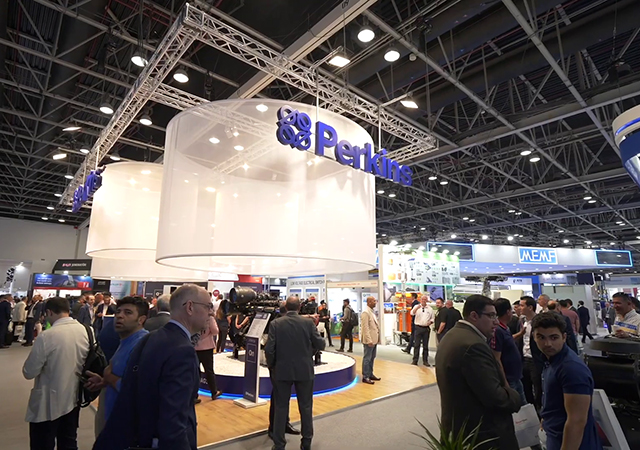
 Latex gloves raw material segment is expected to be a major market segment
Latex gloves raw material segment is expected to be a major market segment
The GCC medical gloves market is estimated to increase from $99.5 million in 2016 to $240.8 million by 2026, registering a CAGR of 9.2 per cent between 2016 and 2026, according to a latest report, titled “GCC Medical Gloves Market: Industry Analysis & Opportunity Assessment, 2016-2026” published by Future Market Insights.
According to Future Market Insights analysts, an increasing awareness regarding hygiene and health and safety is boosting the growth of the GCC medical gloves market. A growing prevalence of pandemic diseases such as Swine flu (H1N1 pandemic), HIV, and other communicable and non-communicable diseases; and an increase in the number of elective treatments such as plastic surgery, liposuction, rhinoplasty, breast augmentation, breast reduction, facial rejuvenation, and blepharoplasty are some of the other factors augmenting market growth.
This is boosting the demand for medical gloves and subsequently impacting market growth in a positive way. Favourable government policies for the growth of the healthcare sector to meet international standards through the development of word-class healthcare infrastructure, services, and expertise is also contributing to the growth of the GCC medical gloves market.
However, an import oriented market, price-based competition, and increasing outbound medical tourism in the GCC region is expected to restrain the growth of the GCC medical gloves market over the forecast period.
The market is also witnessing trends such as a shift in demand from natural rubber gloves to synthetic rubber gloves and a focused investment in capacity expansion by leading market players.
MARKET SEGMENTATION
The GCC medical gloves market can be segmented on the basis of product type (examination gloves, surgical gloves, chemotherapy gloves); form (powdered form gloves, powder-free form gloves); end use (hospital use, clinic use, ambulatory surgery centre use, diagnostic imaging centre use, rehabilitation centre use); type of raw material (latex material gloves, nitrile rubber material gloves, vinyl rubber material gloves, polyisoprene material gloves); type of use (disposable medical gloves, re-usable medical gloves); and distribution channel (direct selling channel, medical store channel, e-commerce channel, other (retail store or hypermarket) channel).
PRODUCT TYPE SEGMENT
The examination gloves segment accounted for 56.8 per cent market share by 2016 end and is expected to register a value CAGR of 8.9 per cent during the forecast period. The surgical gloves segment is estimated to account for a lesser market share as compared to the examination gloves segment during the forecast period. The chemotherapy gloves segment is anticipated to project increased year-on-year (Y-O-Y) growth from 2015 to 2020.
The examination gloves segment was valued at $56.5 million by the end of 2016 while the surgical gloves segment was valued at $34.2 million by the end of 2016.
The latex gloves segment accounted for the largest market share of 79.8 per cent by 2016 end and is anticipated to increase at a CAGR of 9.3 per cent from 2016 to 2026 in terms of value. The nitrile rubber material gloves segment is estimated to be valued at $12.8 million by the end of 2016, exhibiting the highest CAGR of 10.2 per cent over the forecast period.
Latex gloves raw material segment is expected to be a major market segment; however, there is an increasing shift in user preference towards nitrile gloves, the report said.
Consumption of latex rubber material gloves is projected to stand at 1,217 million units by the end of 2016. The nitrile rubber material gloves segment is anticipated to register the highest CAGR of 10.2 per cent throughout the forecast period.
The disposable medical gloves segment accounted for the largest market share of 90.7 per cent by 2016 end. However, the re-usable medical gloves segment is anticipated to register the highest CAGR of 9.5 per cent over the forecast period.
Among the end use segments, the hospital segment is expected to account for the highest gloves consumption and a higher value generation – reaching a valuation of $66.3 million by the end of 2016 and registering a CAGR of 9.3 per cent over the forecast period.
Leading market players are looking to beat competition through industry collaborations, mergers and acquisitions, and capacity expansion.
Some of the major players in the GCC medical gloves market are Paul Hartmann, Hotpack Packaging Industries, Falcon (Falcon Pack), Deeko Bahrain, Salalah Medical Supplies Mfg, United Medical Industries Co, and NAFA (NAFA Enterprises).
Top market companies are entering into strategic mergers and acquisitions (M&As) and are investing in research and development (R&D) initiatives to build a solid product portfolio and cement their footprint in the GCC medical gloves market.
SAUDI TO DOMINATE
The GCC medical gloves market is segmented into the top six countries of Saudi Arabia, the UAE, Qatar, Bahrain, Oman, and Kuwait.
In terms of revenue share, Saudi Arabia is expected to dominate the GCC medical gloves market, accounting for the largest market share of 75.8 per cent by 2016 end. Revenue generated from the Saudi Arabia medical gloves market was pegged at $70 million in 2015 and is anticipated to increase to $184.6 million by the end of the forecast period. This market is expected to witness the highest CAGR of 9.4 per cent during the forecast period and is expected to continue to dominate the market in terms of value.
The UAE medical gloves market is anticipated to witness significant growth over the forecast period, owing to an increasing number of plastic surgeries and other elective surgeries.
The UAE medical gloves market accounted for $18.6 million value share by 2016 end and is expected to register a CAGR of 9 per cent over the forecast period to reach $44.1 million by 2026. The Qatar and Bahrain markets are expected to exhibit modest growth in the GCC medical gloves market during the forecast period.











